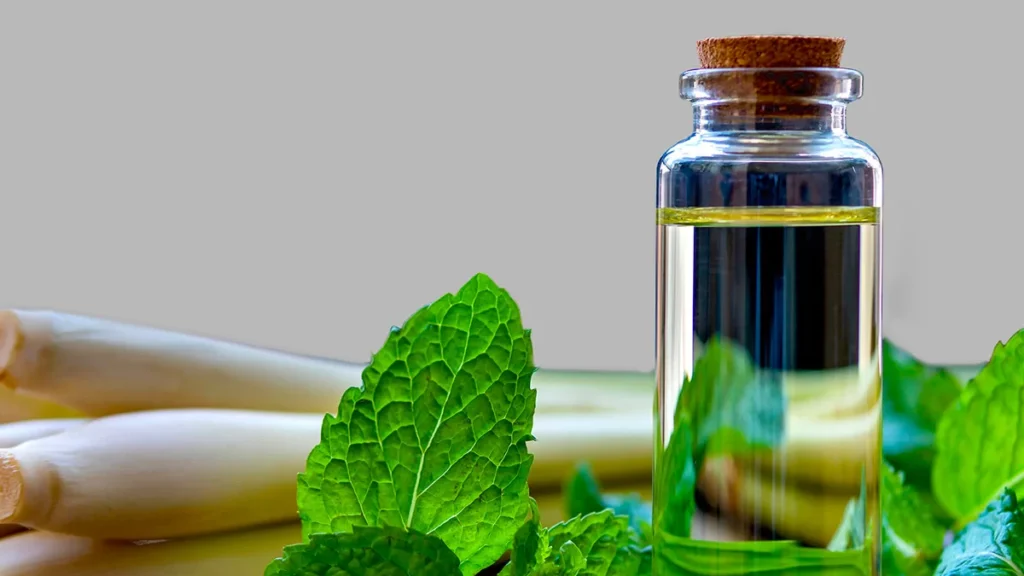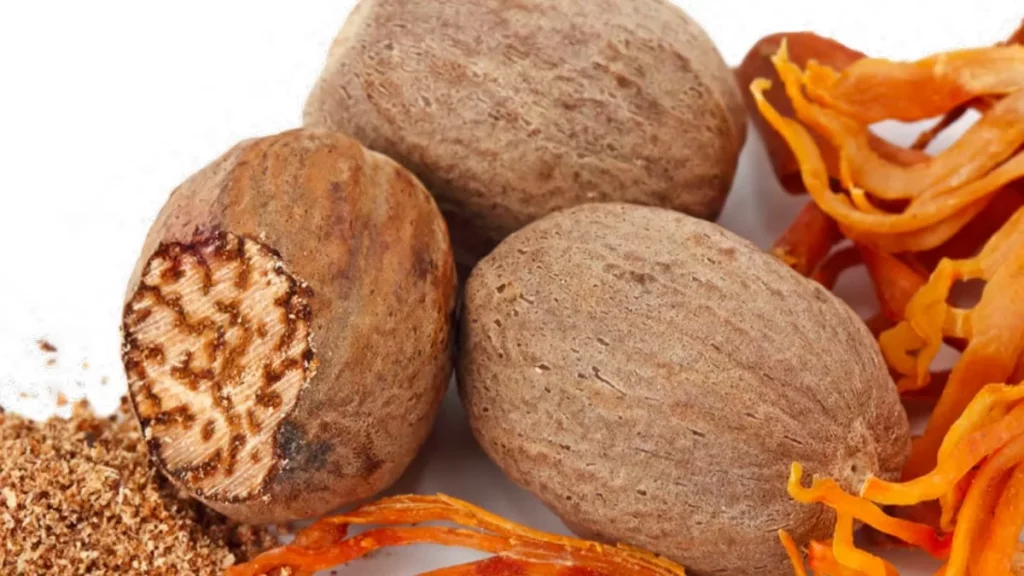GLOBAL CULINARY TOURISM
Consumers have adventurous palates and are interested in bold, global, and fusion flavors. According to Innova Market Insights1, one in three global consumers are intrigued by new, unique, and different flavors, while one in four are attracted to “interesting and exotic global flavor combinations.” For consumers with access to travel, the global culinary tourism market reached $1.09 trillion in 2024 and is projected to reach $4.21 trillion by 2033, with a CAGR of 14.46%, according to Research and Markets2. Hilton’s 2025 Trend report3 found that one in five people travel specifically for culinary experiences. Fortunately, consumers have access to global flavors without having to travel. Spices from Africa, such as harissa, peri-peri, and berbere, and ingredients from the Middle East, like rose, tahini, and za’atar, are gaining momentum and driving consumers’ interest in global cuisines.
OUT OF AFRICA
Africa consists of 54 countries, each with its own history, culture, and foodways4. According to a Flavor & the Menu article5, West African cuisine is characterized by a vibrant street-food culture, aromatic spice blends, spicy condiments, and comfort-centric rice dishes, stews, and soups. “Africa is a big place with lots of undiscovered ingredients and cuisines,” states Len King, executive chef with High Liner Foods. Africa is known for a variety of spices, which are moving into the mainstream. Kerry unveiled Africa for its 2025 Taste Charts6. Hot and Spicy and Authentic Smoke are two of the four major flavor directions identified. “Consumers want different types of heat and spiciness to enhance their meals, while the smoke taste is key in authentic African dishes.” Furthermore, Tastewise7 identified a notable 26% increase in interest in authentic spices.
Harissa is a North African spicy paste made with chilies (fresh, roasted, or dried), garlic, olive oil, and spices such as cumin, coriander, mint, and caraway8. In 2019, Harissa was found on 3.5% of U.S. menus and had increased 70% over the past four years, according to Datassential9. At the time, 20% of the population were familiar with the spice blend, and only 8% had tried it. In 2024, Datassential10 called out “Harissa – the new sriracha” as one of the thirty Flavors & Ingredients To Know. Nando’s, the South African quick service restaurant with 48 restaurants in the U.S., has popularized peri-peri, also known as African bird’s eye chili pepper and a sauce. From 2015 to 2019, peri-peri has grown 49.5% on U.S. menus, per Datassential’s research11. The National Restaurant Association survey12 ranked African flavors as a Top 5 Global Flavor. Known for its complex and robust flavor profile, berbere, an Ethiopian chili and spice blend featuring ginger, garlic, nutmeg, allspice, fenugreek, and cinnamon, cloves, cumin, cardamom, and coriander, was identified as one of the fastest-growing African flavors on menus13.
African flavors are slowly emerging in consumer products. According to Innova’s data4, African flavors introduced over the past five years remain very niche, with less than 200 products launched. For example, West African frozen meal and sauce brand Ayo Foods has recently expanded from 200 retail doors to more than 20 retailers nationwide. New York-based Egunsi Foods produces ready-to-eat African food derived from classic West African dishes. In Maryland, Shuga x Ice offers African-inspired ice cream and frozen desserts. As consumers broaden their tastes and curiosity for global cuisines, they will increasingly embrace African culinary cultures and incorporate them into their palates.
A TASTE OF THE MIDDLE EAST
According to the World Population Review14, the Middle East is an unofficial grouping of countries geographically; several sources include a core group of 15 or 16 countries. Middle Eastern cuisine is known for its rich and aromatic spices, which add depth and complexity. Ingredients like honey, nuts, rosewater, and floral essences are popular in desserts. Middle Eastern flavors such as rose, tahini, and za’atar are gaining global interest. Floral flavors have been trending in food and beverages for several years. According to Datassential15, the younger generation is drawn to rose-flavored beverages. Among Gen Zers who have tried rosewater, 56% say they love/like it. Over the next four years, rose-flavored ingredients are anticipated to drive growth in coffee (+107%) and cocktails (+45%). Datassential’s February 2025 MenuTrends report16 revealed that rosewater is primed for a boom; it’s anticipated to increase 136%. Shannon O’Shields of Rubix Foods says, “I anticipate we may see a lot of rose-flavored products. It has a lot of unique functional properties that people can play into. It also has a health halo, and a very feminine, elegant, or elevated perception.” Rose is also showing up in ice cream. For example, last year, Jeni’s Ice Creams partnered on a Persian flavor with Ben Hundreds from streetwear brand The Hundreds. The Bastani Sonnati x The Hundreds ice cream highlighted saffron, rosewater, and pistachio. Inspired by Love Island’s reality television star Leah Kateb’s Persian heritage, Van Leeuwen collaborated on an ice cream this year. The Van Leeuwen x Leah Kateb Rose & Gold ice cream features saffron rosewater cardamom ice cream with a date swirl and toasted pistachios.
Another well-known Middle Eastern ingredient is tahini. Tahini is a ground sesame butter or paste traditionally used in Middle Eastern cuisine17. It is a staple, most known as a key ingredient in hummus and used in halva. Tahini has been steadily growing in the U.S. In 2020, Nation’s Restaurant News identified Tahini as its Flavor of the Week. It was found on 5.6% of U.S. menus and had grown 46% over the last four years, per Datassential18. In 2024, it appeared on Datassential’s Flavors & Ingredients To Know list10. Innova’s data19 showed that product launches with tahini have seen steady growth globally of 5.9% since 2021. New tahini products were mostly in spreads (45.3%), sauces and seasonings (19%), and confectionery (14.4%). Like Dubai chocolate, tahini is making waves on social media. It is going viral as a beverage ingredient in coffee. According to Tastewise, social conversations about tahini coffee have increased by 126% year-over-year. Furthermore, in March, Yelp searches for tahini lattes surged 900% year-over-year, while searches for tahini coffee skyrocketed 678%20.
On the savory side, za’atar is a popular Middle Eastern spice mix made from a blend of dried oregano, thyme, and/or marjoram, sumac, and toasted sesame seeds21. In 2023, it appeared on 1.4% of U.S. menus, 18% of the population knew it, and 9% had tried it, per Datassential22. Za’atar appeared on Datasential’s Flavors & Ingredients To Know list10 and was described as, “In growth mode for over a decade, za’atar has become a go to flavor enhancer.” Maeve Webster of Menu Matters says, “Middle Eastern flavors are gaining significant traction and may soon rival Asian cuisines in influence. Za’atar is proliferating at a strong pace and other spices and spice blends, including sumac, baharat, and berbere are growing.”23
EMBRACING GLOBAL FLAVORS
Like other snacks, consumers are seeking better-for-you candy. Shopkick’s data5 revealed 47% of conConsumers are curious about other cultures and adventurous with food. Innova24 identified Imaginative Taste Adventures as #3 on its global flavor trend for 2025, which describes consumer pursuit of experiences with flavor adventures and unique flavor combinations. Mintel’s global consumer research25 revealed that 36% of consumers enjoy trying unfamiliar flavors. Furthermore, according to Mintel26, global cuisines are expected to become more mainstream, with authenticity and simplicity key to increasing consumer engagement, despite challenges from rising ingredient costs and tariffs. Datassential4 indicates that acceptance of African cuisines is in the early stages of adoption. “What’s clear is that Senegal, Nigeria, and Ghana in West Africa, Ethiopia to the east, South Africa in the south, and Morocco to the north are the points of origin being watched most closely.” Consumers will continue to embrace African and Middle Eastern flavors, spices, and ingredients. For example, African and Middle Eastern restaurants are spicing up the UK scene, with Nigerian, Ethiopian, and Afghan cuisines rising, per Tastewise27.
Take an adventure with Trilogy Flavors. Use our science, creativity, and culinary expertise to be your co-creator on your next global food and beverage flavors. From floral to spicy to sweet, Trilogy Flavors crafts innovative and tasty global flavors. Contact us today.
Sources:
- https://www.innovamarketinsights.com/trends/consumer-trends-for-global-flavor-adventure/
- https://www.researchandmarkets.com/report/culinary-tourism
- https://stories.hilton.com/2025trends/foodies
- https://www.ift.org/news-and-publications/food-technology-magazine/issues/2025/may/features/the-emerging-flavors-of-africa
- https://www.getflavor.com/exploring-west-african-cuisine/
- https://www.prnewswire.com/news-releases/kerry-releases-2025-global-taste-charts-predicting-the-future-of-flavour-302351385.html
- https://www.forbes.com/sites/caitlinpalumbo/2024/11/20/diners-are-craving-bold-global-flavors-and-immersive-food-experiences/
- https://tastecooking.com/recipes/linda-schneider-harissa/
- https://www.nrn.com/food-trends/flavor-of-the-week-the-heat-is-on-in-harissa
- https://info.datassential.com/hubfs/Email%20Files/FoodBytes/Datassential%20-%20FoodBytes%20-%202024%20Food%20Trends%20Report.pdf
- https://www.dotfoods.com/newsroom/devour-by-dot-blog/prime-time-for-peri-peri-and-bulgogi/
- https://www.unileverfoodsolutions.us/chef-inspiration/trend-watch/regional-trends/africa-rising.html
- https://www.tastingtable.com/1873224/is-berbere-spice-hot-african-bbq-staple/
- https://worldpopulationreview.com/country-rankings/middle-east-countries
- https://foodinstitute.com/focus/flower-power-gen-z-craves-floral-menu-innovations/
- https://rubixfoods.com/trends-insights/5-floral-flavors-beverage-menus/#:~:text=Rose,elevated%20perception%2C%E2%80%9D%20she%20explained
- https://www.foodnetwork.com/how-to/packages/food-network-essentials/what-is-tahini
- https://www.nrn.com/food-trends/flavor-of-the-week-tahini-the-versatile-sesame-sauce-expands-beyond-tradition
- https://canadiangrocer.com/four-things-know-about-tahini#
- https://foodinstitute.com/focus/open-sesame-tahini-latte-searches-surge-900-on-yelp/
- https://www.bonappetit.com/story/what-is-zaatar
- https://www.nrn.com/menu-trends/the-earthy-spice-blend-za-atar
- https://www.ift.org/news-and-publications/food-technology-magazine/issues/2025/october/features/outlook-2026-flavor-trends
- https://www.innovamarketinsights.com/trends/global-flavor-trends-2025/
- https://www.nacsmagazine.com/Issues/October-2024/Flavor-Forward
- https://store.mintel.com/report/us-regional-and-international-cuisines-market-report
- https://tastewise.io/report/foodservice-report-trends-towards-2024






